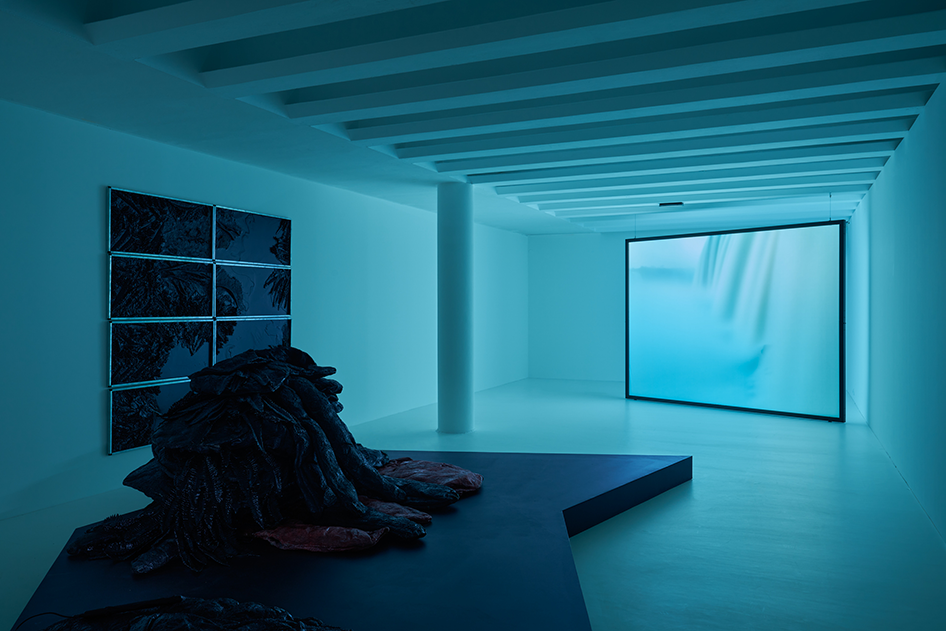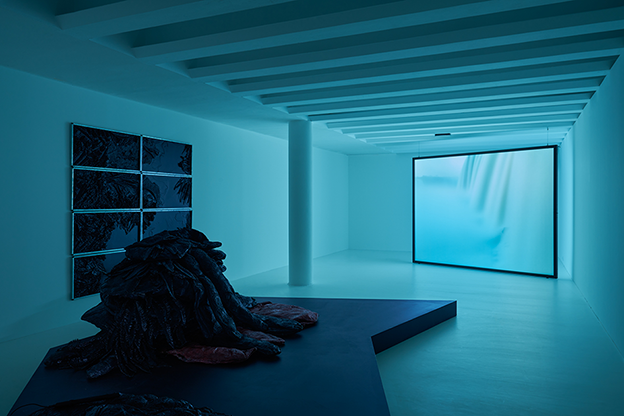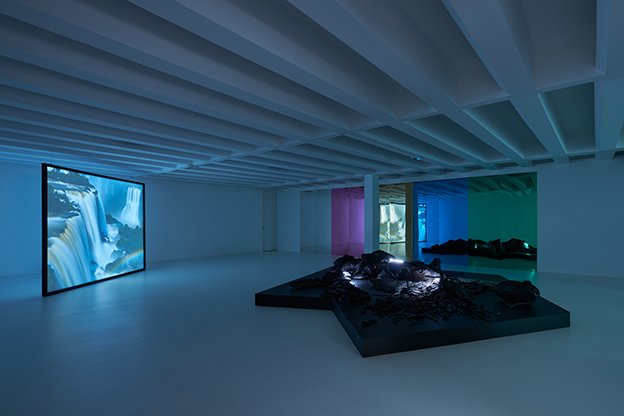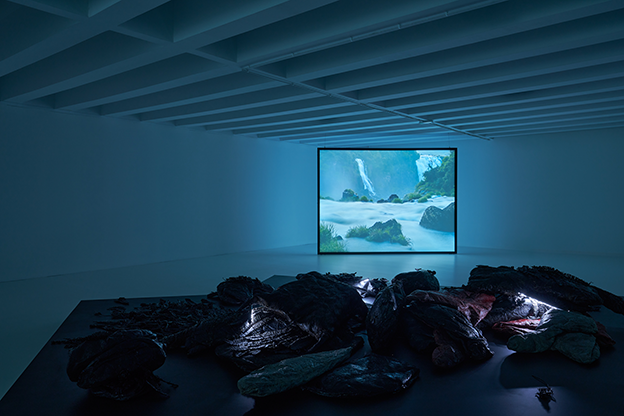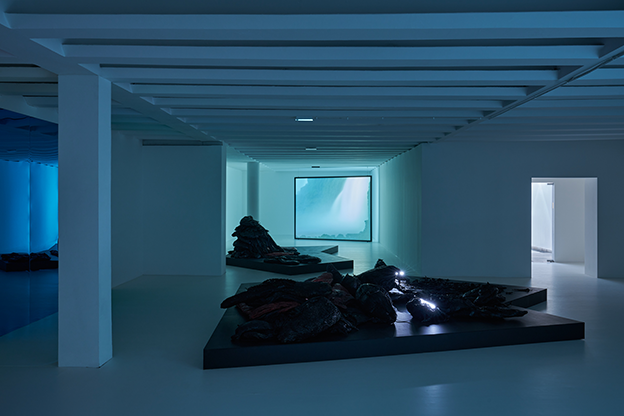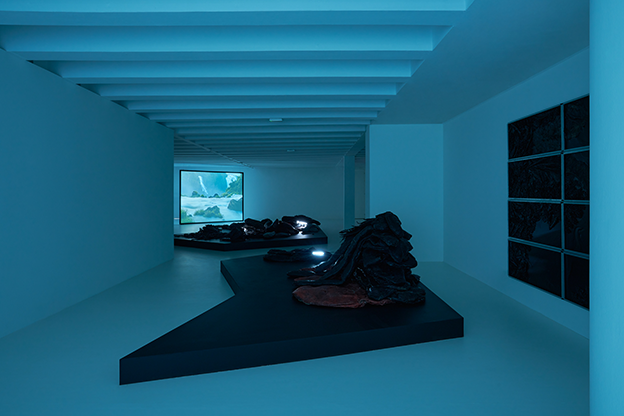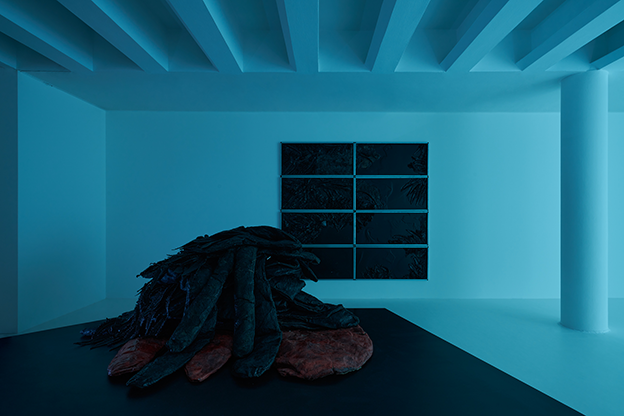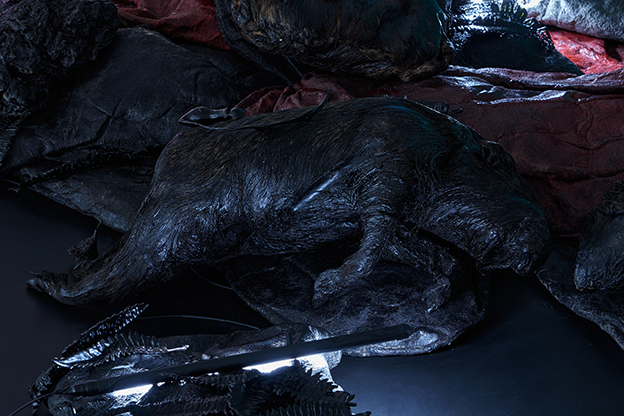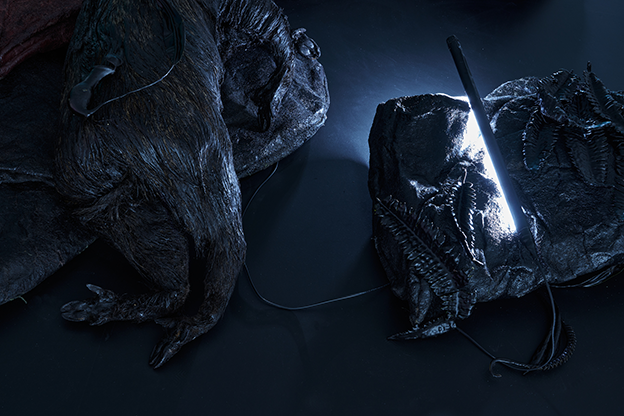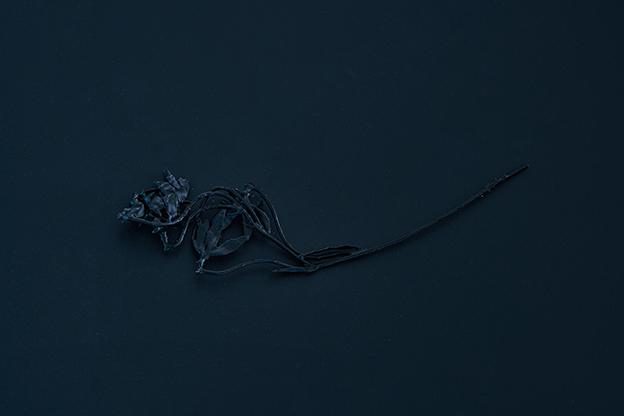The Devil’s Throat. Solo show at the Sztuki Współczesnej Gallery, Opole, Poland, 2024.
Curator : Łukasz Kropiowski
The Devil’s Throat(1) was formed during one of the most powerful volcanic eruptions in Earth’s history, about 130 million years ago. It is more than 80 metres deep, and its mighty roar can be heard over a radius of 20 kilometres. Overwhelming though they may seem, these figures are very much in line with the scale of Angelika Markul’s art. The enormity of the Throat is beyond human ken, and its churning waters are filled with thoughts that can hardly pass through a human mouth.
The waters symbolize potency, they are reservoirs of all possible forms of existence: “[…] they precede every form and sustain every creation. The exemplary image of the whole creation is the Island that suddenly ‘manifests’ itself amidst the waves. Conversely, immersion in the waters symbolises a regression into the undifferentiated mode of pre-existence. Emergence repeats the cosmogonic act of formal manifestation; while immersion is equivalent to a dissolution of forms”(2). This aquatic symbolism sends us back to the primordial soup or, as Michel Foucault aptly stated, ‘to the wetlands where we struggle to escape the tadpole existence’. The waters hide an ancestral gallery of which we are ashamed – this is not why we toiled, abandoning the ‘wetlands’ and pursuing the plan of constant ‘progression’. Meanwhile, the Devil’s Throat indiscreetly reveals our origins; we are unable to lose touch with or disassociate from them. “Not only were we created by non-humans, but it is also them who continually keep us in existence”(3). Water is a dangerous element – everything that ‘culture’ reduces to human measure can be restored to the non-human dimension.
After leaving the waters (a symbolic exit from the ‘stage of potency’), man is subject to the laws of time, which we try to tame, as we do with everything else, and adapt it to the rhythm of participation in ‘culture’ and the prospect of participation in ‘history’. We treat tamed temporality as a means for organising our activities, a map of memories or a frame of experience. Angelika Markul, however, leaves this ‘familiar’ horizon. In The Devil’s Throat, time takes an extra-cultural dimension, its sheer scale – the spectre of the beginnings of life on Earth 4 billion years ago, the image of geological formations and fossils from hundreds of millions of years ago – causes discomfort. Faced with such magnitude, we remain helpless, the figures elude our imagination as human experience lacks analogies or even a point of reference. In the age of the Anthropocene when human-induced changes to the geo-ecosystem and atmosphere affect the climate, the chemical composition of the oceans and biodiversity, it appears, despite a sense of discomfort, that ‘natural history and human history are becoming one, forming a geo-history’(4). “Cultural” accounts of time are further compounded by the fact that a potential climate catastrophe now puts the continued survival of our species in question. The thought of a post-human aspect of history has moved out of the realm of fiction or metaphor and has become a real possibility.
In The Devil’s Throat we encounter majestic forces of nature, the pre-human (prehistoric) and the inevitable. In a moment of fiasco of planetary management resulting in a great extinction of species and destabilisation of the climate, the perception which makes man cease to be the measure of all things cannot be surprising, although it does not cease to make us feel uncomfortable. “Discomfort” seems a category quite appropriate in the face of what the monumental throat reveals to us. The powers beyond human capabilities make us aware of the anthropocentric mania for grandeur and the arrogance of the ‘colonising’ project of controlling nature. They restore humility towards the planet we inhabit, the mystery of our origins and the alternative of a future where man is no longer present.
Łukasz Kropiowski
1. Garganta del Diablo (Devil’s Throat) is the largest waterfall cascade of the River Iguaçu on the Argentine-Brazilian border.
2. Mircea Eliade, Images and Symbols: Studies in Religious Symbolism (trans. Philip Mairet), Princeton University Press, Princeton, 1991, pp. 150 – 152.
3. Andrzej Marzec, Antropocień. Filozofia i estetykapo końcu świata, Warsaw 2021, p.137.
4. Ewa Bińczyk, Epoka człowieka. Retoryka i marazm antropocenu, Warsaw 2018, p.128.
Angelika Markul, The Devil’s Throat, 2013
Video installation with two screens
Film, colour, sound, 10’12”, 4’18”, loop
Sculptures and paintings (felt, artificial plants, stuffed animals, wax).
© Tomasz Koszewnik
